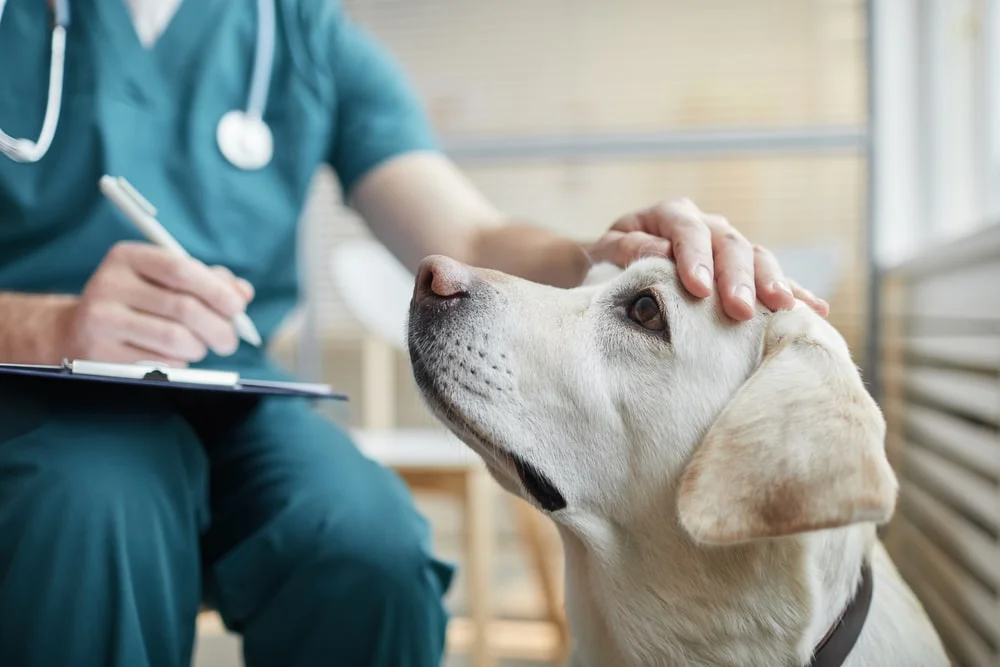A trip to the emergency vet can be a harrowing experience, and the bill that comes with it can add insult to injury.
What many pet parents don’t know is emergency veterinarians can charge more for their services, and visits can add up. Luckily, pet insurance can typically help with these expenses.
“Emergency costs can range from as little as a few hundred to easily a few thousand dollars, depending on the severity of the case,” says veterinarian Dr. Hunter Finn. “I have seen cases where pet insurance allowed an owner to confidently spend thousands of dollars and received 90% of the money back within 2 weeks after treatment.”1
Read on to learn more about the cost of emergency vet visits, some ways you could provide care for your pet, and how pet insurance can potentially help you save money.
Is Paying Your Pet's Vet Bills Getting Hairy?
Basics of Emergency Vet Costs
Emergency vet costs can be expensive because of high operating expenses, the rising cost of medications, and specialized labor. Due to the variety of services offered at emergency vet clinics and the animals they treat, costs will vary depending on your pet’s emergency. The cost can also depend on where the clinic is located.
Let’s consider a scenario: A puppy named Muffin ingests a sock, which causes her to become severely constipated. Muffin needs surgery to remove the sock from her gastrointestinal (GI) tract immediately at a 24-hour emergency vet clinic in downtown Denver, Colorado. The bill Muffin’s pet parent will pay could include:2
- An exam fee
- Diagnostic testing (X-ray, ultrasound, MRI, etc.)
- Surgery costs
- Anesthesia
- Prescription pain medications
- Overnight boarding
Because of the location and need for comprehensive emergency care, the bill is over $1,300.2
Emergency vet fees vs. regular vet fees
Regular vet visits for routine checkups, vaccinations, and preventative care tend to be less expensive — since they typically involve standardized procedures and less labor time. On the other hand, emergency vet visits often require more extensive diagnostics, treatments, and consultations to address urgent medical issues, leading to higher costs.3
How Much Is an Emergency Vet Visit Without Pet Insurance?
Generally, most vets require you to pay for services upfront. This means you’ll typically have to cover the entirety of the bill — whether it be $100 or $1,000 — before you can take your pet home.
Even pet parents who have pet insurance can’t get around this “pay to play” model, but they could be reimbursed. The way pet insurance works is simple. Once you’ve hit your deductible, you can typically have anywhere between 80% and 90% of qualifying expenses reimbursed, depending on your policy. This means that regardless of how you paid — cash or credit — you can expect a portion of those covered expenses to be returned to you.
How Much Is an Emergency Vet Visit for a Dog?
While the specific numbers for emergency vet visits can vary, there are estimates based on common dog diseases and illnesses. Here’s what dog parents can expect to pay for an emergency vet visit.4
Type of Service |
Cost* |
Exams |
$100 – $150 |
General blood work |
$80 – $200 |
X-ray |
$150 – $250 |
Ultrasound |
$300 – $600 |
Hospitalization (1 – 2 days) |
$600 – $1,700 |
Hospitalization (3 – 5 days) |
$1,500 – $3,500 |
Wound treatment |
$800 – $2,500 |
Emergency surgery |
$1,800 – $5,000 |
Oxygen therapy |
$800 – $3,000 |
*Cost depends on your dog’s size, where you live, and the severity of their case.
How Much Is an Emergency Vet Visit for a Cat?
Cat parents may be well aware that their curious kitties can get into all sorts of trouble. Sometimes, that trouble lands them in emergency situations that could cost owners big time. Here are some estimates of what common emergency vet visits for cats could cost.4
Type of Service |
Cost* |
Exams |
$100 – $150 |
General blood work |
$80 – $200 |
X-ray |
$150 – $250 |
Ultrasound |
$300 – $600 |
Hospitalization (1 – 2 days) |
$600 – $1,500 |
Hospitalization (3 – 5 days) |
$1,500 – $3,000 |
Wound treatment |
$800 – $1,500 |
Emergency surgery |
$1,500 – $3,000 |
Oxygen therapy |
$500 – $2,500 |
*Cost depends on your cat’s size, where you live, and the severity of their case.
How To Pay for Emergency Vet Costs
If your pet needs a trip to the emergency vet, the unexpected cost can put a strain on your wallet. The good news is you have a few options to pay for your pet’s medical care.
Pet insurance
Preparedness is key to shielding your finances from unexpected vet bills, which is why pet insurance may be a great option. Most pet insurance policies don’t cover pre-existing conditions, but if you get the policy when your pet is still healthy, pet insurance can be very helpful. Additionally, MetLife Pet Insurance offers a 0-day waiting period for accidents and optional Preventive Care coverage.5
High-yield savings accounts
You may have a “rainy day” fund for yourself. But does your pet have one? It can be a good idea to put aside some money in a high-yield savings account for your furry friend each month. This can help you soften the blow when emergencies happen. Opting for a high-yield savings account ensures your pet’s emergency fund grows faster, providing better financial security for the future.
Outside help
There are organizations to help when you can’t afford your vet bills. For example, Waggle is a non-profit organization that helps you find assistance to take care of your pet.6 These can be a better resource than traditional crowdfunding websites, which could take a portion of the money you’ve raised.
Alternatives to an Emergency Vet
If you’re uncertain whether your pet requires emergency care, consulting your vet is highly recommended. However, if you believe emergency treatment isn't essential to your pet’s well-being, there are alternatives you can consider.
- Contact telehealth services: 24/7 telehealth apps offer immediate answers for pet parents, often through a subscription service. But MetLife Pet policyholders receive this service for no additional charge.7 This perk may help you save time and money by addressing basic health concerns before visiting your vet.
- Prepare a pet first-aid kit: Equip yourself for non-life-threatening emergencies by creating a pet first-aid kit, following guides like those offered by the American Veterinary Medical Association (AVMAⓇ). Kits should include important phone numbers, your pet’s medical records, essential supplies — like a thermometer and bandages — and items for managing poison ingestion and wound care.8
- Call the pet poison hotline: In case of accidental poison ingestion, promptly call the Animal Poison Control Center (APCC) at (888) 426-4435.9 They’re available 24/7, even during major holidays. The APCC will ask for basic information about your pet and what they may have ingested. They’ll then advise you on whether to care for your pet at home or seek help from a vet. Make note of your case number in the event you or your vet needs to speak to them again.
MetLife Pet Insurance Could Help You During Pet Emergencies
At MetLife Pet Insurance, winner of the “Pet Insurance of the Year” Award,10 we’re committed to helping you keep your pets happy and healthy — whether that means learning all there is to know about your pets or protecting them with a pet insurance policy. Our policies cover the most common emergency vet visits, so you can focus on what matters most: your furry friend.
Just ask the pet parents of Riley, a labradoodle from San Jose, California. After Riley ate something toxic, she was rushed to the vet for an emergency exam that cost over $1,250. But thanks to their MetLife Pet policy, Riley’s parents were reimbursed around $1,150 of their vet bill.2
Want to learn how a MetLife Pet policy can help you save money? Get started today with a free quote.
We Can Help Cover Vet Bills While You Focus on Your Pet’s Care


